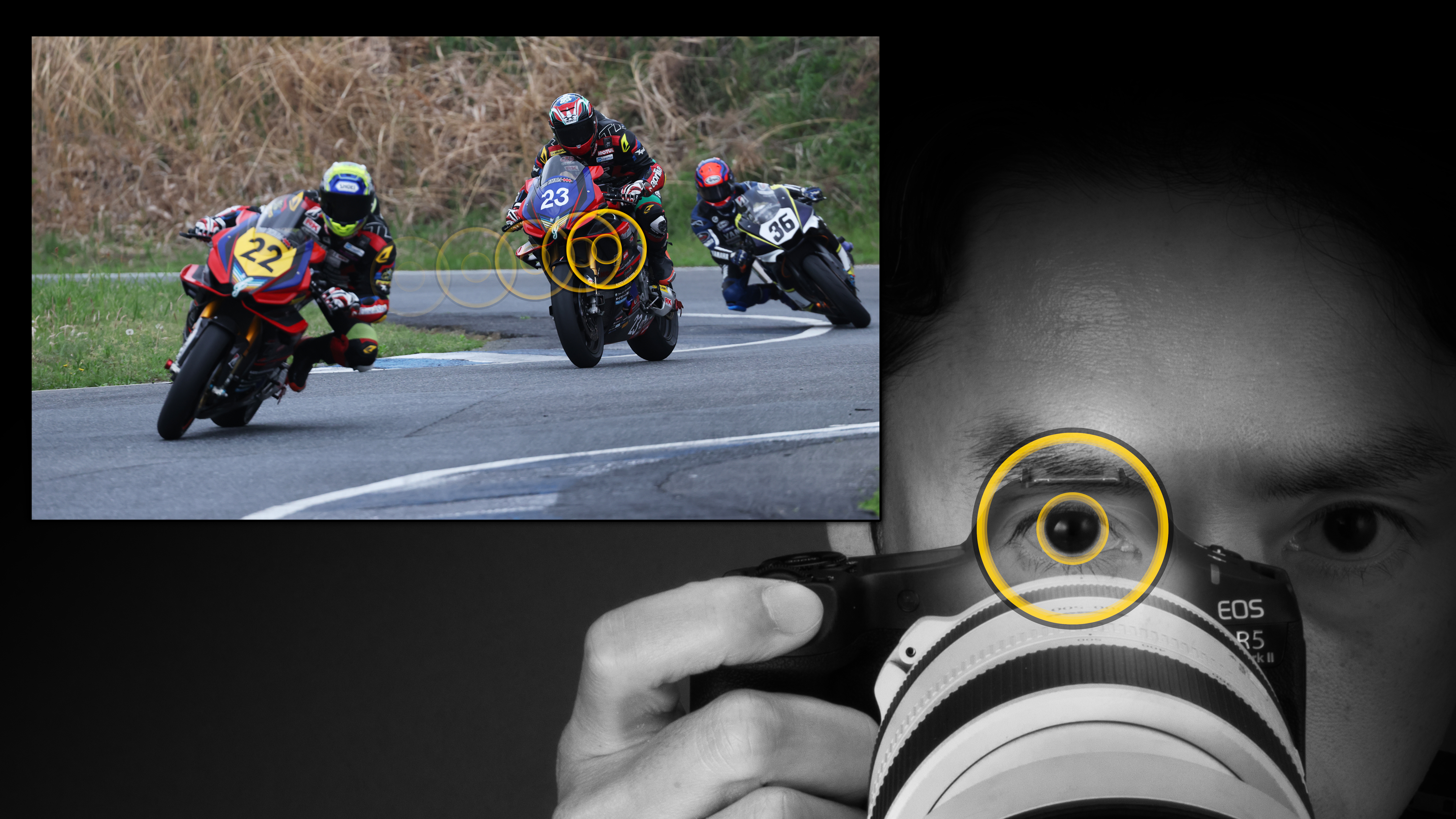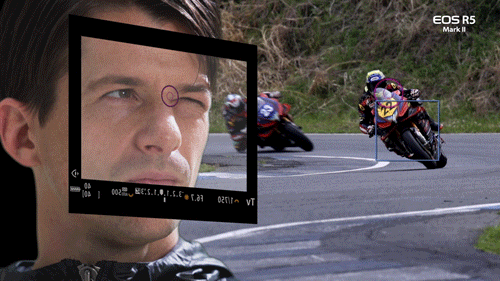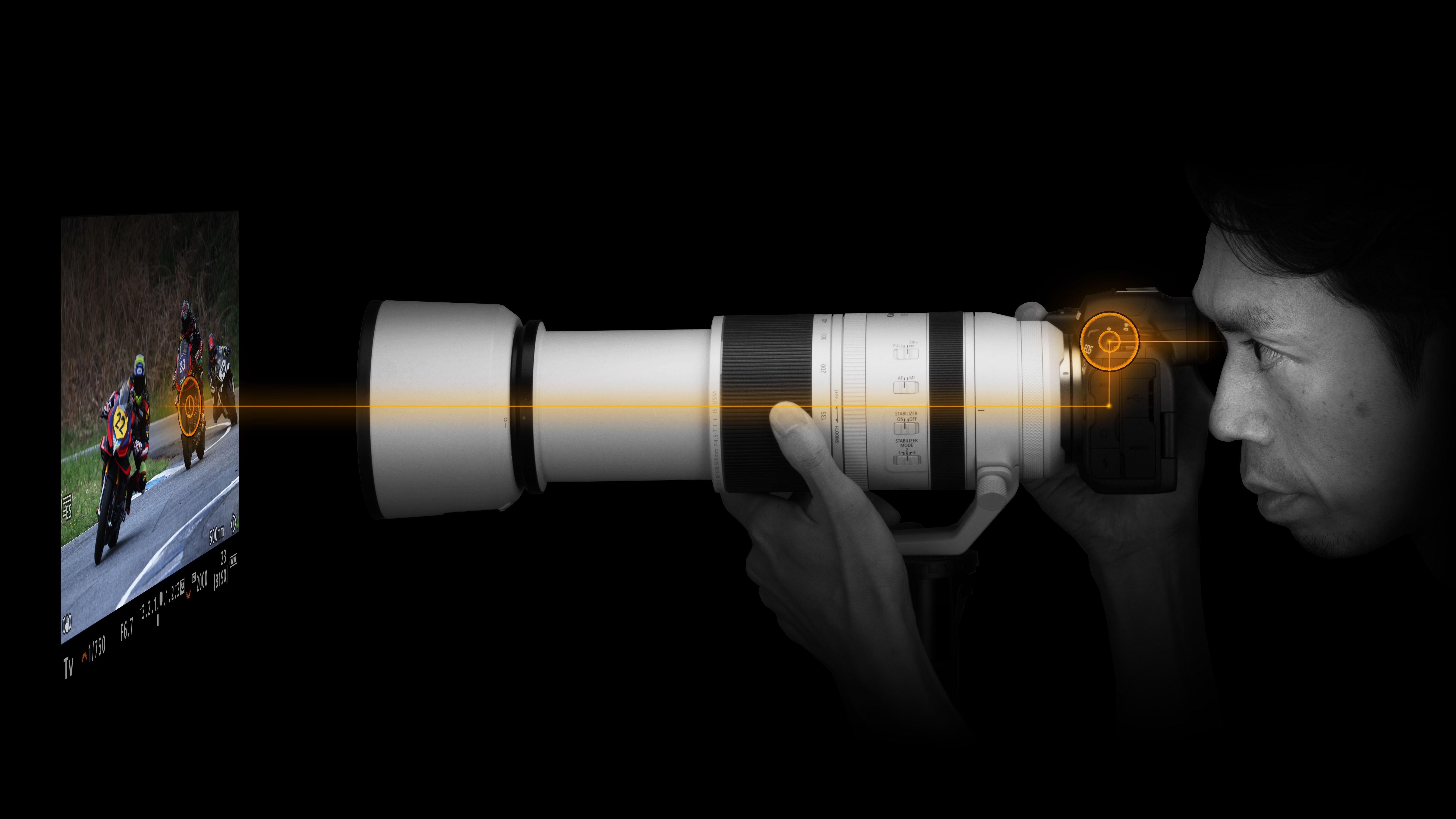
Canon's Eye Control AF technology was first introduced way back in 1992 on the EOS 5, but it wasn't quite the party trick it promised to be and was phased out.
Fast-forward to 2021 and it was reintroduced in the Canon EOS R3, where it pretty much did what it said it would do, but there were plenty of caveats, like it not working effectively if ambient light conditions were constantly changing. Another proviso was spectacles (and potentially even contact lenses) impeding its proper functioning.
When I tested the Eye Control AF on the EOS R3 back in 2022, I found it was a lot of fun to use, but getting it calibrated while wearing glasses definitely caused me a few headaches. Two years later, at the launch of the Canon EOS R5 Mark II and EOS R1, the camera maker mentioned that improvements had been made and Eye Control AF should now be more accurate for people who wear glasses – like me.
I recently spent about three weeks with the R5 II and, sadly, could not get Eye Control AF calibrated. I tried in various conditions – with and without glasses (thank goodness for EVF diopters!) – and had no success. I even reset the camera twice… no joy. There was always a significant lag between my eye movement and the circular reticule during calibration, which meant I didn't get to try it out again.
Adding salt to my wounds was the fact that my colleagues were able to experience it when they got their hands on the EOS R1 at a media event. Tim Coleman at our sister site TechRadar was impressed, and Digital Camera World's very own James Artaius is a big fan of the technology too.
Me, not so much – I think it's gimmicky.

Two AF systems is one too many
Now, don't get me wrong, I'm not calling it gimmicky because I couldn't make it work on the R5 II – I'm basing this on my experience with the R3. I just don't see the point of an additional layer of autofocus on a pro-level camera if it won't be useful all the time.
I use the word 'layer' as Eye Control AF is optional to use. As a photographer I am all for technology that makes my work simpler and faster – if just looking at a subject locks the focus point, dammit, I want to use it all the time to speed things up. But it really needs to work all the time. And this brings me to why it won't be useable consistently.
Eye Control AF is extremely dependent on external factors – while the distance between your eye and the EVF is important (which is why people who wear glasses might have trouble), it's even more finicky about ambient light.
Eye Control AF works based on a retina scan created when infrared light hits the back of the eye. When the ambient light conditions change, so does the eye itself to adjust. And even though you can save a few different calibrations based on various environmental settings, they're not going to be the same unless you work in a studio.
With the R3, I had more hits than misses, but I had more misses than hits with the R5 II – either way, there wasn't much consistency.

Not only do I wear glasses, I usually have one eye closed when I peer through the viewfinder – which means the open eye is never going to be a consistent size, and that makes the calibrations for Eye Control AF that much harder. The only way around this is to keep both eyes open and, for someone set in her ways, that's not the most natural thing for me to do.
Fortunately, as I found out when testing the R3, the default AF reticule remains visible through the EVF at all times, which means cameras like the R5 II and R1 will still be able to capture a sharp, focused shot.
Moreover, autofocus speeds are so darn quick these days, I don't think even the human eye can keep up. Well, maybe it can, but that still begs the question: do we really need Eye Control AF?
For the headlines perhaps, but I think the technology still has a way to go before anyone can make Eye Control AF work the way it should.
Want to know more about Canon's 2024 releases? Read about what we think about Canon's in-camera AI-powered editing features and how they can affect your workflow. Or you can find out more about the best Canon cameras and the best Canon RF lenses.







